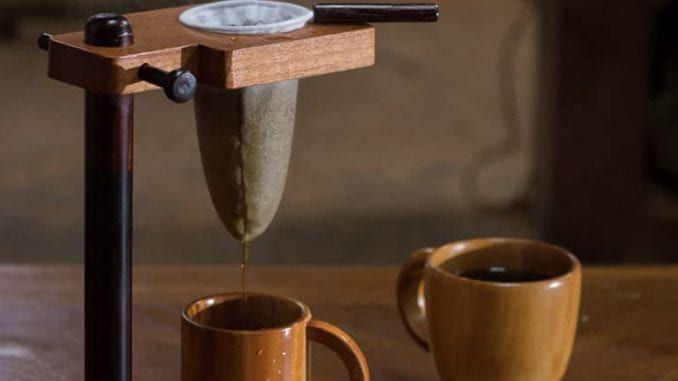Checking Out the Art of Coffee Brewing: A Comprehensive Guide to Developing Your Cup
The art of coffee brewing is a multifaceted discipline that combines scientific research with individual expression, where the selection of beans, water high quality, and developing techniques assemble to create a refined sensory experience. Understanding the subtleties of numerous coffee beans, specifically the differences between Arabica and Robusta, is vital for any type of enthusiast.
Understanding Coffee Beans
To absolutely appreciate the art of coffee developing, one need to first comprehend the foundational component: coffee beans. Coffee beans mainly drop into 2 classifications: Arabica and Robusta.

Additionally, the handling method-- whether washed, all-natural, or honey-- influences the beans' final taste. Comprehending these components permits brewers to choose the ideal beans that straighten with their preferred flavor profile, eventually boosting the coffee developing experience. coffee brewing methods. This comprehension is necessary for any person aspiring to master the craft of brewing the ideal mug of coffee
Developing Approaches Clarified
Many enthusiasts find that the choice of brewing technique substantially affects the last taste and scent of their coffee. Each technique uses various removal methods, affecting the coffee's character and richness.
Drip brewing, one of the most popular methods, uses a machine to drip warm water via ground coffee, generating a tidy and constant cup. French press, on the other hand, submerses coffee premises in warm water, enabling for a fuller body and more robust taste, as oils and great bits stay in the brew.
Pour-over developing supplies a careful technique, where water is manually poured over coffee premises, permitting for exact control over extraction time and temperature, causing a intense and nuanced cup.
Coffee, a focused coffee brewed under stress, is understood for its strong taste and luscious structure, functioning as the base for numerous coffee drinks, including cappucinos and cappuccinos.
Vital Equipment Required
The foundation of any type of effective coffee brewing procedure exists in quality tools tailored to your favored approach. A dependable coffee mill is crucial; newly ground beans substantially boost flavor and scent.
Following, consider your developing device. Choices vary from drip coffee machine and pour-over setups to French presses and espresso makers. Each approach provides unique taste accounts and developing techniques, so select one that lines up with your preference choices.
A precise scale is also vital, permitting you to measure coffee and water accurately, which is important for uniformity. Furthermore, a thermostat can assist check water temperature level, as it directly influences extraction quality.
Mastering Water High Quality
The top quality of water utilized in developing coffee plays a considerable function in identifying the final flavor account of the mug. Different elements add to water quality, including mineral web content, pH degree, and general purity. Ideally, water needs to be devoid of contaminations and pollutants, as these can detrimentally influence the taste of coffee.
Minerals, such as calcium and magnesium, enhance the removal of tastes from the coffee grounds, while keeping a well balanced pH level-- around 6.5 to 7.5-- is essential for optimum removal. article source Water that is too soft might cause under-extraction, leading to sour or weak tastes, while overly tough water can create a bitter or severe mug.
For the very best results, filtered water is advised, as it decreases the presence of chlorine and various other unfavorable materials commonly found in faucet water. Furthermore, consider utilizing water with a Total Dissolved Solids (TDS) degree between 150-200 ppm, which is normally perfect for coffee developing. By grasping water top quality, you can lay a solid structure for accomplishing a continually exceptional mug of coffee, enabling the one-of-a-kind qualities of your picked see it here beans to shine through.

Tips for Taste Enhancement
Enhancing the flavor of your coffee can dramatically elevate your developing experience and bring out the distinct subtleties of your chosen beans. To accomplish this, take into consideration several crucial variables that influence taste.
To start with, the work size plays a vital role. A finer grind boosts removal, resulting in bolder flavors, while a coarser grind returns a milder mug. coffee brewing methods. Adjust your grind according to your brewing technique to attain optimal results
Secondly, explore more info here mixture time. Over-extraction can lead to bitterness, while under-extraction lead to a sour taste. Goal for a mixture time that stabilizes these extremes, generally between two to four minutes, depending upon your technique.
Brewing with water that is also warm can blister the coffee, while water that is also great may fail to remove appropriate flavor. In conclusion, the art of coffee developing is a diverse practice that calls for a deep understanding of different elements, consisting of bean choice, developing techniques, and water high quality. By incorporating these elements, coffee enthusiasts can boost their brewing techniques, resulting in a mug that not only pleases personal choices but additionally showcases the rich intricacy of coffee flavors.
The art of coffee developing is a diverse discipline that combines science with individual expression, where the choice of beans, water high quality, and brewing techniques converge to produce a refined sensory experience.To genuinely appreciate the art of coffee developing, one must first recognize the foundational component: coffee beans. Brewing with water that is as well hot can swelter the coffee, while water that is also amazing might fail to remove adequate flavor. In verdict, the art of coffee brewing is a multifaceted technique that requires a deep understanding of different aspects, consisting of bean option, developing approaches, and water high quality. By incorporating these components, coffee lovers can boost their brewing methods, resulting in a mug that not only satisfies individual choices yet also showcases the abundant intricacy of coffee tastes.